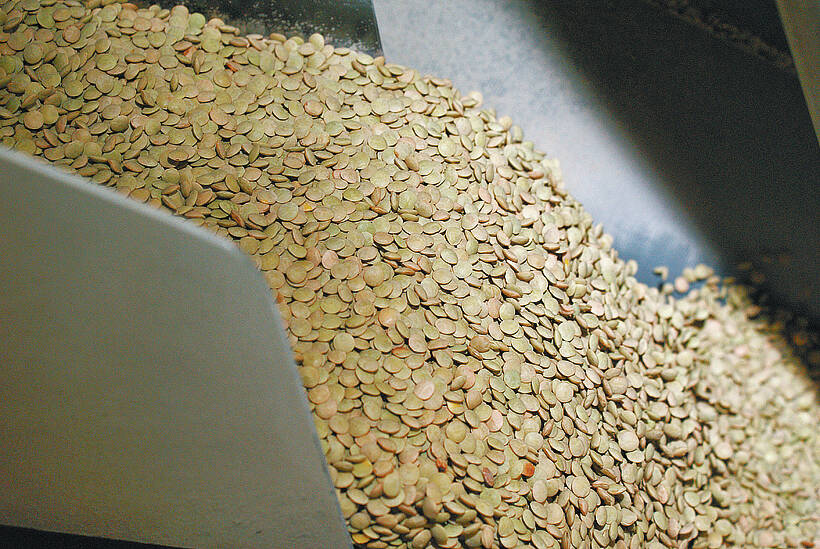Still too many hogs
United States hog slaughter continued at a record-breaking pace last week and producers on both sides of the border were practically giving away their hogs.
Even with lower wholesale and retail pork prices encouraging consumption, some hogs marketed at auction markets had nowhere to go. Producers trying to liquidate breeding sows had difficulty finding buyers at any price, said Manitoba Agriculture in its weekly markets report.
Packer bids at midwestern auction markets fell to $9-$13 (U.S.) per cwt. on Dec. 17. They regained $1-2 per cwt. the next day.
Read Also

Green lentil market oversupplied
Farmers in Western Canada can expect price pressure on their new crop of green lentils, as the available supplies among the world’s major lentil-growing nations increase significantly.
In Manitoba, Index 100 hog prices (including premiums) dropped from $54.67 per 100 kilograms on Dec. 14 to $49.24 per ckg on Dec. 17.
Manitoba hog slaughter was at a record level of about 62,000 head last week as local processors took advantage of the low hog prices.
The strike at Quality Meat Packers in Toronto pressured Ontario hog prices, which plunged to $39 ckg on Dec. 17.
Glenn Grimes, of the University of Missouri, said the end of low prices depends on what is causing the large number of hogs.
If it is due mostly to the warm fall weather, then sometime in January or early February, there is a good chance for slaughter to drop close to last year’s levels and for prices to rebound sharply.
But if the large slaughter is due to the hog herd being more productive than indicated by the September USDA Hogs and Pigs report, then slaughter will likely stay above two million head for most of January and prices will continue low with a slight improvement from the lows of December.
Cattle prices generally hold
Fed cattle prices fell last week, dropping $2-$2.50 lower by Dec. 16 but stabilizing by the end of the week.
Canfax said more cattle are now showing up with more than 100 days on feed. Carcass weights have stalled near 798 pounds, indicating how well the cattle have done during the mild fall.
Dec. 17 trade in Alberta saw steers bring $83.75-$84.90 per cwt., flat rail $143.10-$144.65 and heifers $83.70-$85.50, flat rail $145.60.
Wholesale beef sales were relatively quiet although business is expected to pick up for New Year’s deliveries, said Canfax.
Wholesale prices tracked the lower cash cattle prices and are down $3 per cwt. in Calgary and Montreal.
Byproduct values firmed as a result of some stronger hide prices.
Canfax said that with two weeks of holiday disruptions ahead, packer requirements look well in hand. Prices are not expected to change much from the mid $80s through to the end of the year.
With American cattle prices hovering around $58 (U.S.) per cwt., a normal basis would suggest Alberta prices around $81-$82, so sellers should continue to be aggressive in their marketings given the strong basis.
Slaughter cows saw strong demand. Packers were active bidders on the moderate pre-Christmas supply.
Feeder cattle prices were under some pressure following the decline in fed cattle prices.
Most weight classes of steers and heifers dropped by $1-$3 per cwt. on the average from the previous week.
Yearlings fell the most while lighter weight calves were mostly steady. Volumes were 28 percent higher than the previous week.
Prices are generally $2-$5 per cwt. higher than a year ago.
Pressure on calves, and more so yearlings, is expected to carry into the New Year as tax-driven purchases dry up.
There was increased demand for bred cattle last week. Bred cows were $450-$1,450. Most good quality cows traded from $1,000-$1,300, with medium types from $800-$1,000. Bred heifers ranged from $500-$1,500. Most good quality heifer quotes were from $850-$1,300, and medium types from $700-$1,100.














